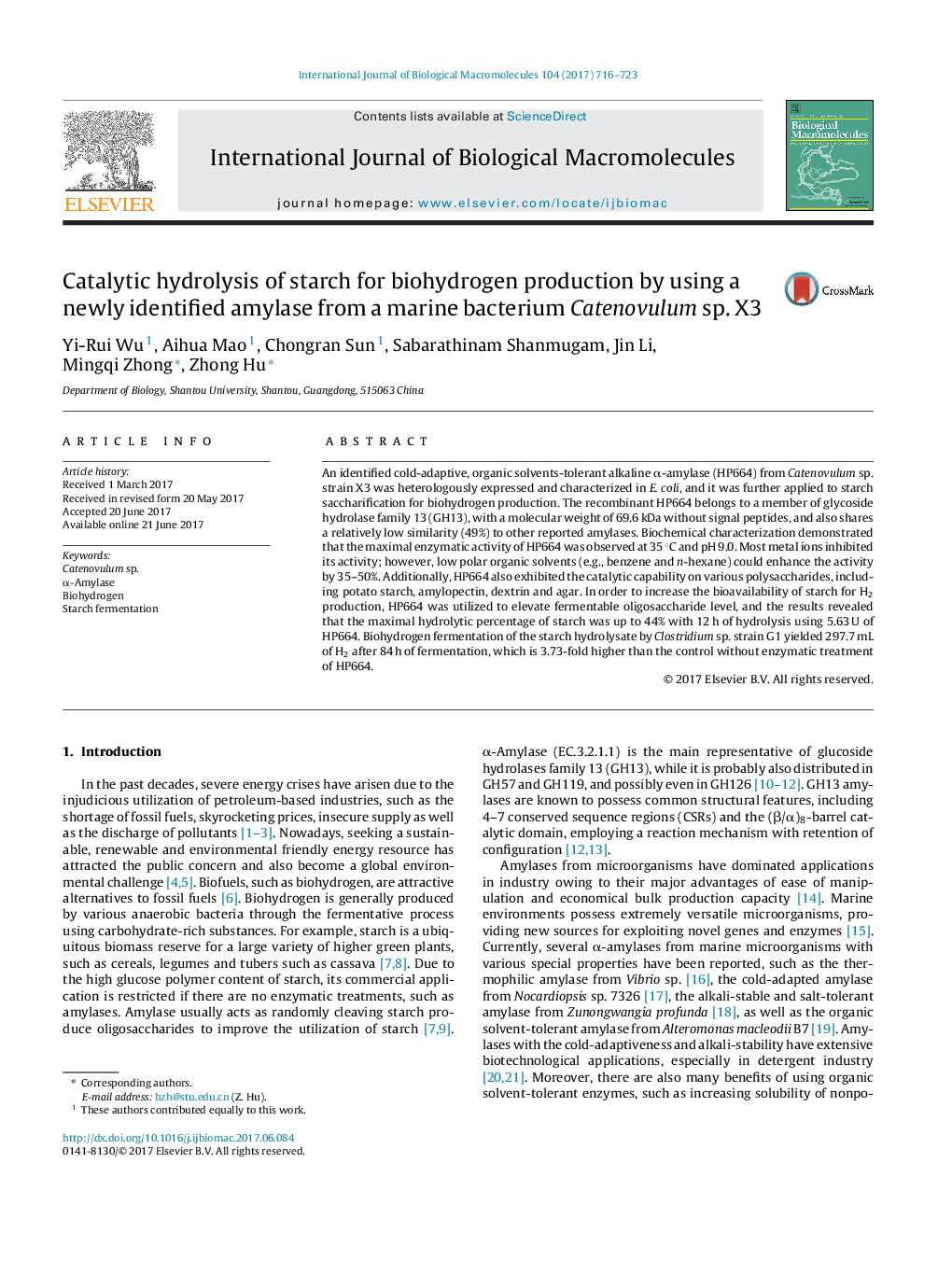| کد مقاله | کد نشریه | سال انتشار | مقاله انگلیسی | نسخه تمام متن |
|---|---|---|---|---|
| 5511698 | 1540214 | 2017 | 8 صفحه PDF | دانلود رایگان |

An identified cold-adaptive, organic solvents-tolerant alkaline α-amylase (HP664) from Catenovulum sp. strain X3 was heterologously expressed and characterized in E. coli, and it was further applied to starch saccharification for biohydrogen production. The recombinant HP664 belongs to a member of glycoside hydrolase family 13 (GH13), with a molecular weight of 69.6 kDa without signal peptides, and also shares a relatively low similarity (49%) to other reported amylases. Biochemical characterization demonstrated that the maximal enzymatic activity of HP664 was observed at 35 °C and pH 9.0. Most metal ions inhibited its activity; however, low polar organic solvents (e.g., benzene and n-hexane) could enhance the activity by 35-50%. Additionally, HP664 also exhibited the catalytic capability on various polysaccharides, including potato starch, amylopectin, dextrin and agar. In order to increase the bioavailability of starch for H2 production, HP664 was utilized to elevate fermentable oligosaccharide level, and the results revealed that the maximal hydrolytic percentage of starch was up to 44% with 12 h of hydrolysis using 5.63 U of HP664. Biohydrogen fermentation of the starch hydrolysate by Clostridium sp. strain G1 yielded 297.7 mL of H2 after 84 h of fermentation, which is 3.73-fold higher than the control without enzymatic treatment of HP664.
Journal: International Journal of Biological Macromolecules - Volume 104, Part A, November 2017, Pages 716-723